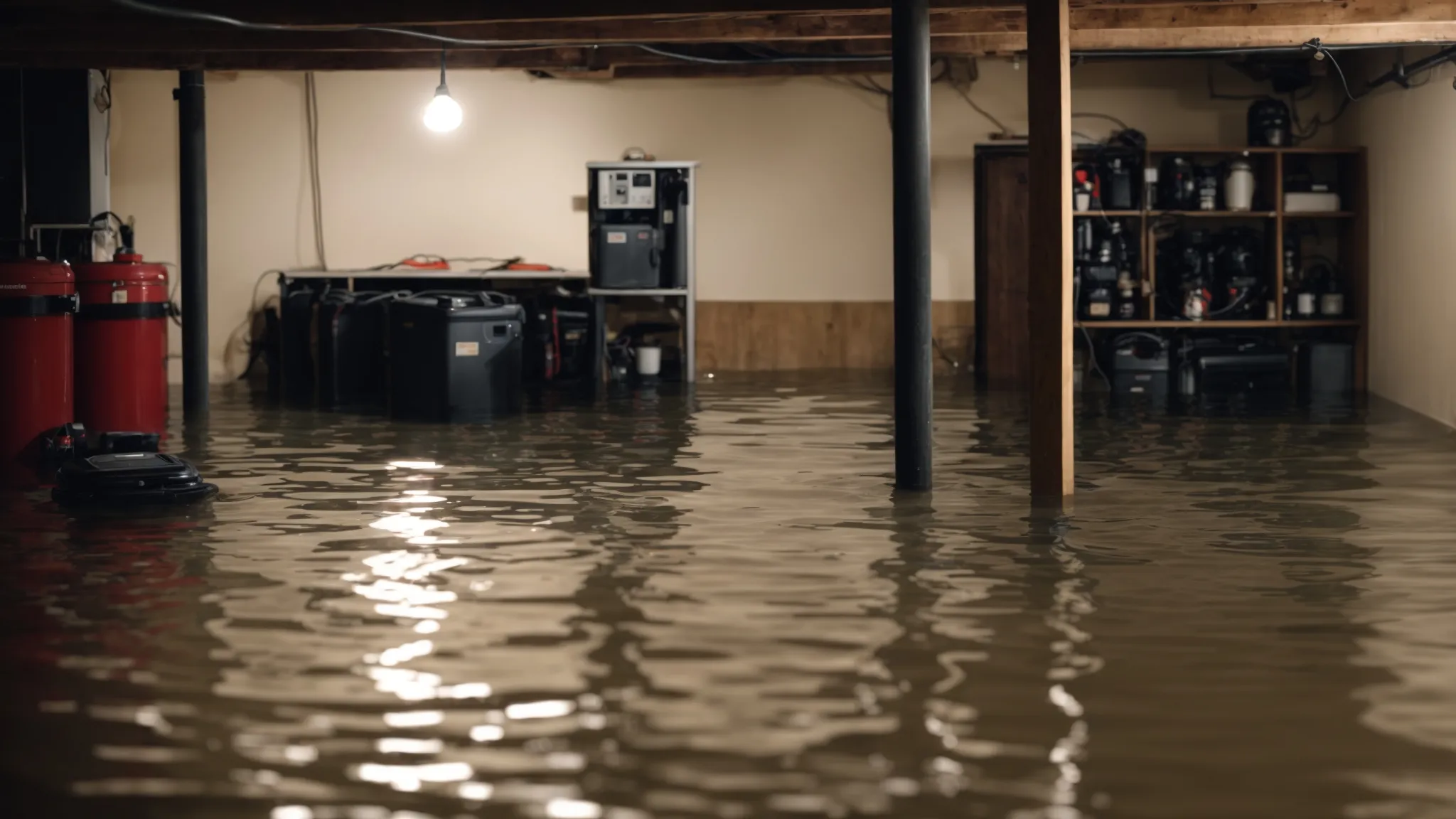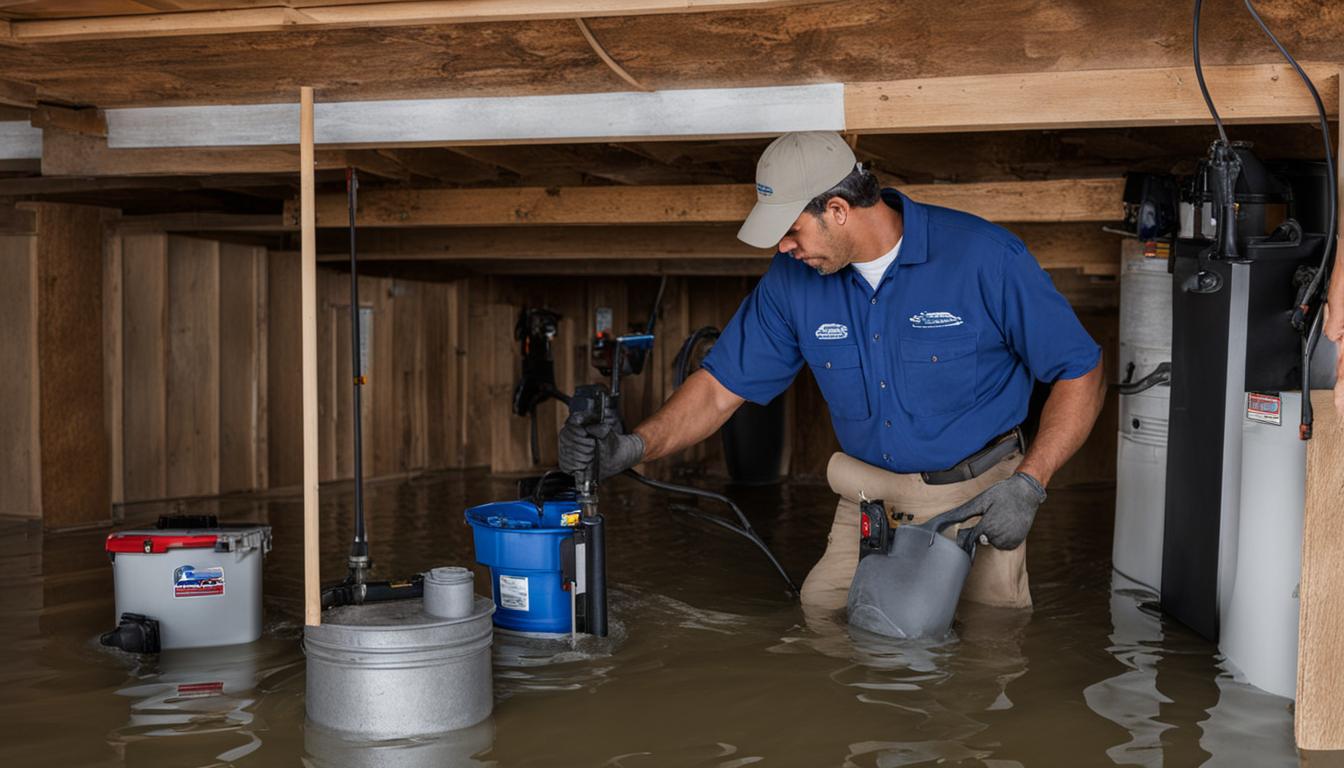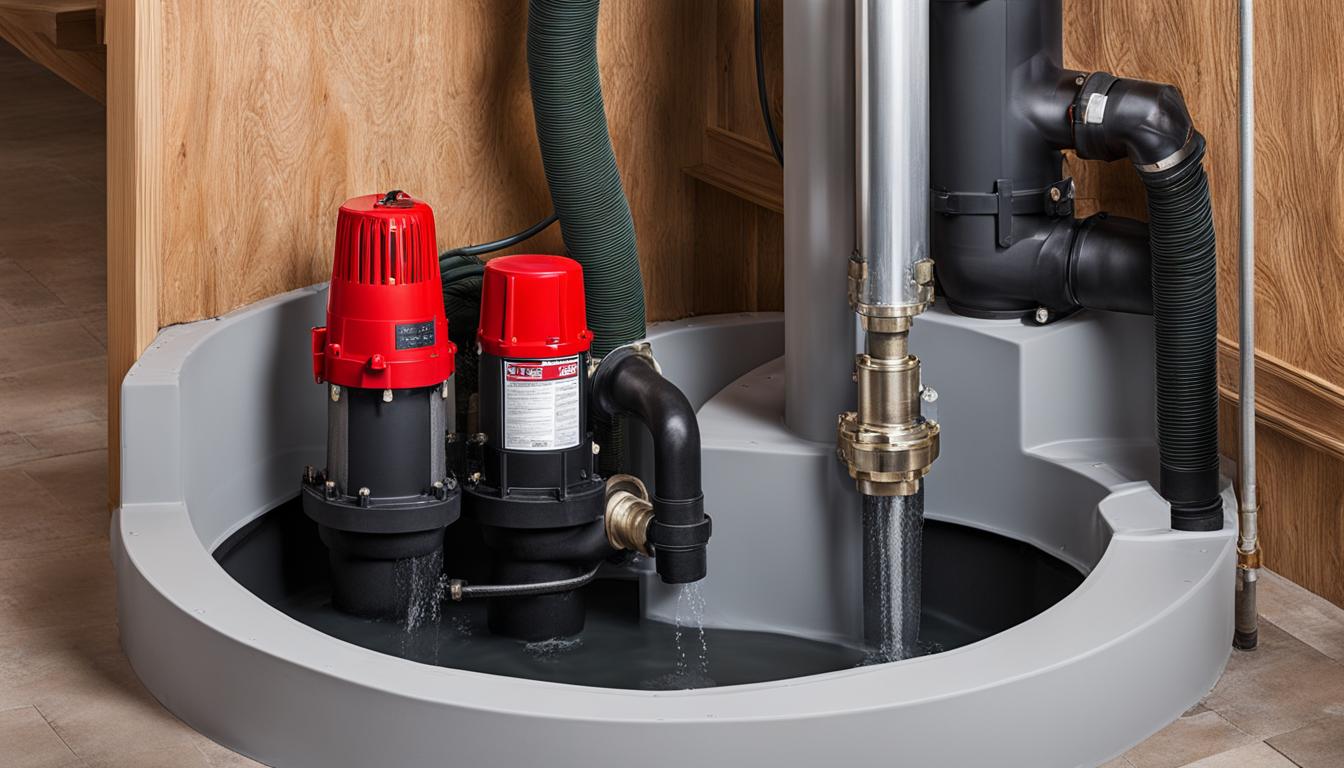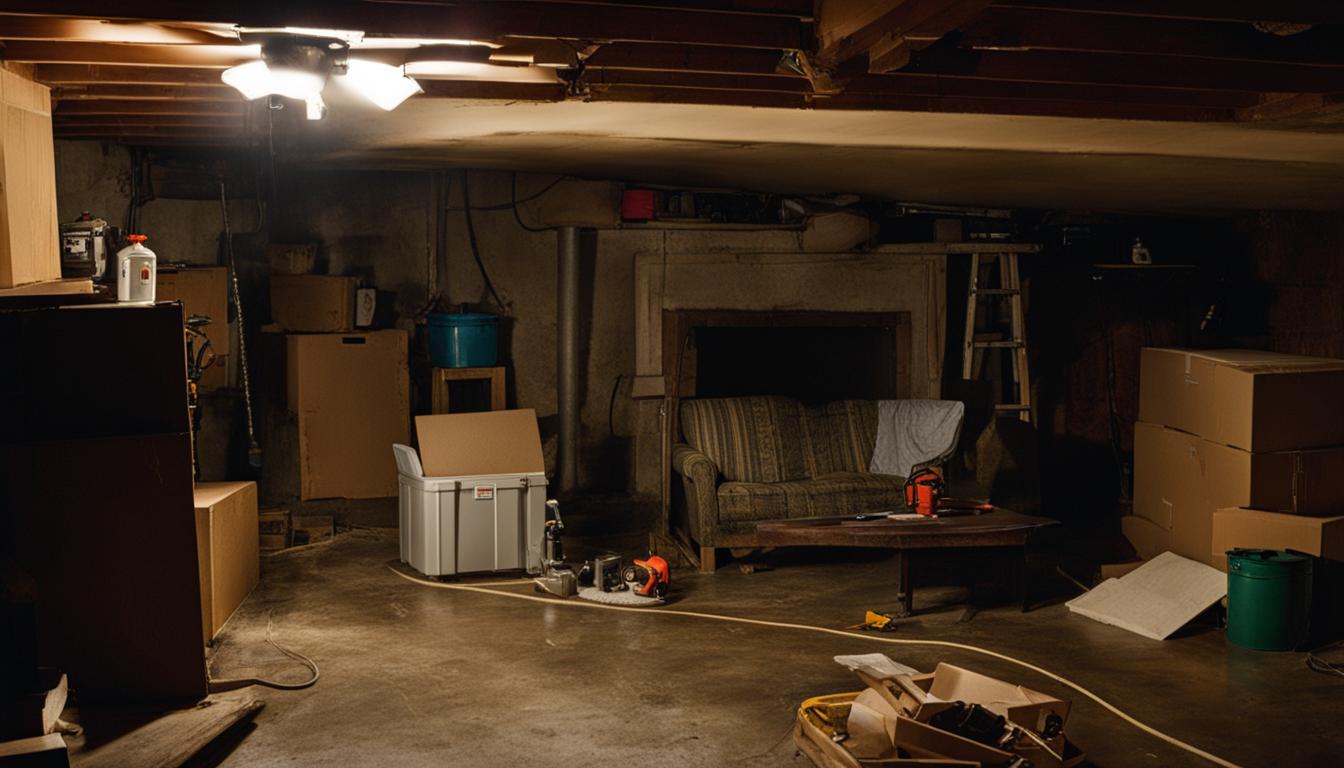Battery Backup for Sump Pumps: Key Pros and Cons
When the tempest howls and electricity bows in defeat, a battery backup for your sump pump stands as a vigilant sentinel against the tide.
It’s the unsung hero that guards your basement’s dry sanctity, a shield against the chaos of storms and unexpected outages.
A deft combination of iron-clad assurance and silent operation, these power reserves could mean the difference between peace of mind and watery woes.
Yet, as with any fortress, the ramparts require thoughtful design and occasional upkeep.
Keep reading to wade through the sea of details that determine whether a battery backup can be your cellar’s steadfast protector or a silent specter of false security.
Key Takeaways
- A Sump Pump With a Battery Backup Provides Uninterrupted Protection During Power Outages
- Battery Capacity and Lifespan Are Critical Factors That Determine the Sump Pump’s Efficacy in Flood Prevention
- Regular Maintenance and Timely Battery Replacement Ensure the Sump Pump’s Reliability in Crisis Situations
- The Upfront Cost of a Battery Backup System Is an Investment in Long-Term Safety and Potential Cost Savings
- Choosing the Right Type of Battery Backup Involves Weighing Factors Like Longevity, Maintenance, and Response Time
Advantages of Having a Battery Backup System

Picture this: a tempest roars like an untamed beast, its howling winds are the harbingers of darkness, and suddenly, all is still as the power capitulates to nature’s fury.
In that heartbeat of silence, my sump pump, a sentinel in the shadows, stands ready, unyielding, thanks to its battery backup system.
The tranquility within my home prevails, undisturbed by the chaos outside, for the continuous operation during power outages ensures not a single drop of the deluge stealthily amassing outdoors dares to breach my sanctuary.
This steadfast guardian not only fortifies my defenses against floods but also weaves an invisible cloak of serenity, a peace of mind that whispers promises of dry ground underfoot, regardless of the storm’s rage.
Continuous Operation During Power Outages
Imagine an unyielding fortress, its defenses invisible yet impervious; this is my home during a power outage, with the sump pump’s battery backup as its cornerstone. The storms clatter and thrash against the windows, a cacophony of nature’s discontent, while within, the steadfast hum of my pump echoes resilience.
| Event | Without Battery Backup | With Battery Backup |
|---|---|---|
| Power Outage Begins | Sump pump halts, silence ensues | Sump pump transitions seamlessly to battery power |
| During Outage | Water level rises, risk of flooding increases | Water is continuously evacuated, maintaining dryness |
| After Power Restoration | Residual water may cause damage | Smooth return to grid power, no excess water |
As daylight fades, a whispering assurance fills the air: uninterrupted protection. My family sleeps, cocooned in the grasp of safety, as our sump pump’s battery backup stands as a silent sentinel, tirelessly guarding against the night’s tempestuous siege.
Increased Peace of Mind in Flooding Situations
My pulse steadies, knowing the steadfast shield of a battery backup stands between my home and the insidious creep of floodwater. As tempests rage and indifference echoes through the heavens, my fortress remains secure, its calm engineered through foresight and unyielding technology.
It’s akin to an invisible hand steadying a ship amidst a furious sea; the battery backup offers solace where anxiety once held dominion. Each patter of rain against the pane whispers potential havoc yet within, with every heartbeat of my reliable sump pump, assurance replaces dread, crafting an oasis of tranquility in a potential storm of chaos.
Lightning strikes in the realm of resilience, and the battery backup system stands as our steadfast guardian against blackouts. Yet, not all guardians are created equal, and the tapestry of factors we’ll unravel can transform a reliable sentinel into a faltering shield.
Factors Affecting Battery Backup Performance

As I navigate the labyrinth of home protection, two pivotal elements emerge, casting long shadows over the realm of battery backups: the enigmatic battery capacity with its intertwined companion, lifespan, followed by the often-overlooked, yet quintessential role of maintenance in shaping reliability.
Under the vigilant gaze of these factors, my home’s bulwark against flooding—the sump pump’s battery backup—finds its mettle tested.
It’s a tale of enduring vigilance, where every charge cycle paints the portrait of resilience, and each maintenance check writes a verse in the saga of steadfast reliability.
Understanding Battery Capacity and Lifespan
Peering into the heart of longevity and performance, battery capacity emerges as a pivotal character: it dictates the endurance of my sump pump’s backup system. The ampere-hours etch the destiny of my home’s resilience—the greater the capacity, the longer the sentinel stands guard.
- Capacity dictates backup duration.
- Ampere-hours mark resilience.
- Greater capacity equals extended defense.
Lifespan, the silent partner to capacity, wears a clock’s face, counting down the cycles until replacement beckons. It is this inexorable march of time that shapes my upkeep strategy, for diligent replacement schedules fortify my bulwark against unexpected surrenders to the ever-flowing river of time.
The Impact of Maintenance on Reliability
I embrace the rhythm of routine, where the act of maintenance beats like a drum, signaling the dance of reliability. Each inspection, a choreographed move that guarantees the sump pump’s battery backup performs without faltering when the storm clouds gather and the curtain of rain descends.
Evading the pitfalls of neglect, I engage with my system, a dialogue between owner and machine that prevents the silent decay of components. This kinetic energy of care ensures that when floodwaters rise like a treacherous tide, my sump pump’s battery backup meets the challenge head-on, a paragon of unfailing duty.
As the sun sets on the saga of battery backup performance, a new chapter dawns, one tinged with the hues of green bills and cost considerations. Let’s leap into the fiscal labyrinth, where the secrets of installing a power sentinel are unfurled.
The Cost Implications of Installing a Battery Backup
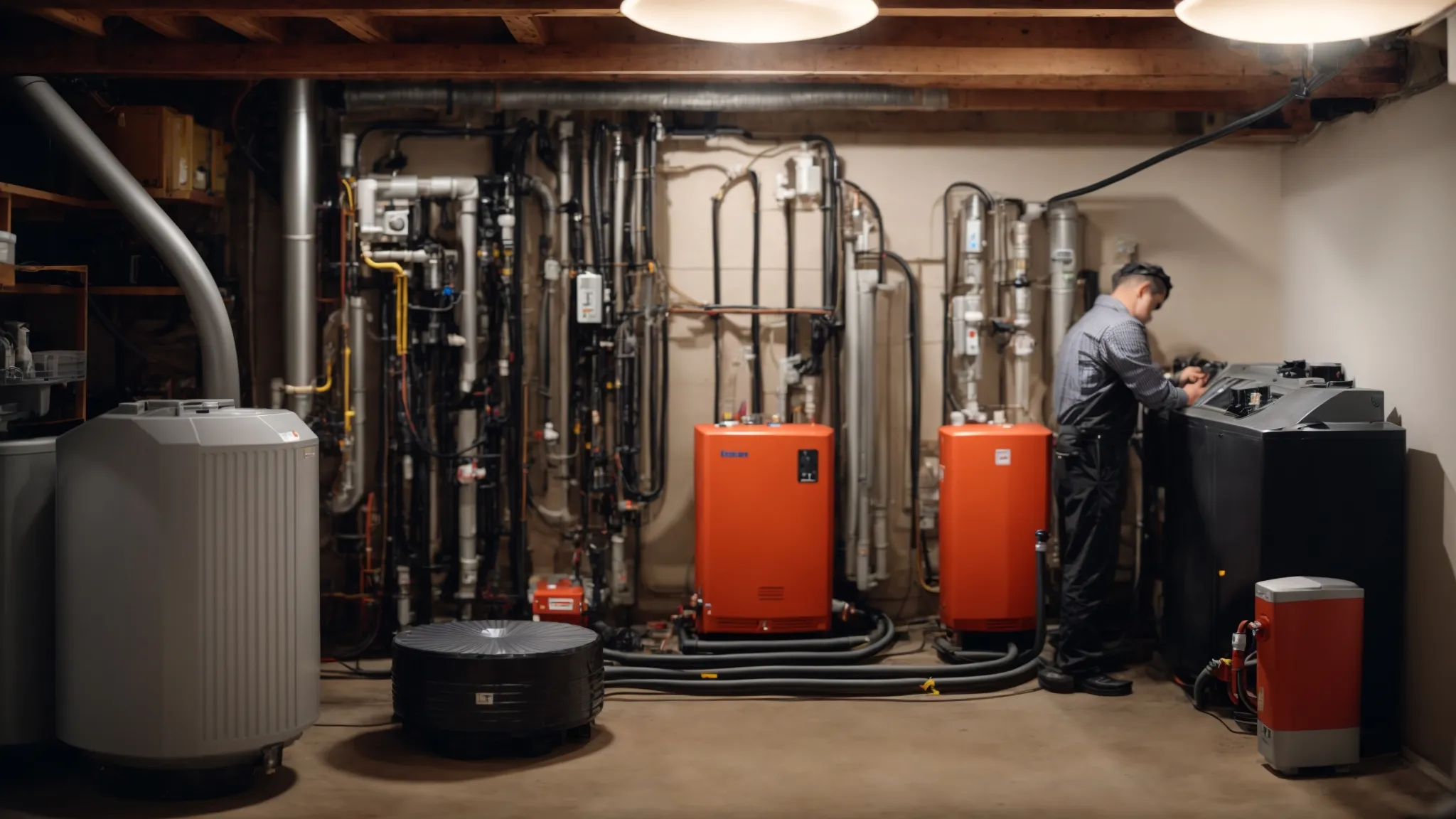
Embarking on the journey to insulate my abode with a battery backup for the sump pump, the initial outlay of funds stands before me, a gatekeeper demanding its due.
This upfront investment, a tangible testament to my commitment to safeguarding my home, unfurls its narrative of cost and complexity.
Yet beyond this immediate expenditure lies the prospect of long-term financial reprieve, a subplot of enduring value that merits equal consideration.
Balancing the scales between the immediate expense and the promise of future savings, I prepare to scrutinize these economic actors, charting a course through my home’s fiscal waters with prudence as my compass.
Upfront Investment Costs Explained
Standing at the precipice of commitment, I contemplate the significance of the initial capital required to secure a sump pump battery backup system. It’s not merely a purchase; it’s an investment in my home’s unassailable safety.
- Initial costs reflect quality and capacity.
- Investment in protecting against power outages.
- Creates long-term savings through flood prevention.
This forethought is grounded in foresight: calculating the worth of disaster averted versus the price of protection paid. Quality, capacity, and my home’s unique needs must dictate the sum handed over – an act of defense in currency’s garb.
Long-Term Savings and Value Considerations
Entwining the threads of long-term fiscal prudence with the fabric of home safety, I find the value of a battery backup system for my sump pump residing not just in the cataclysm it thwarts, but in the continuous stream of expenses it forestalls: a lowered insurance premium mirroring the reduced risk, the avoidance of costly water damage repairs, and the preservation of priceless heirlooms from the ravages of water—a tapestry of savings and solace that blankets my future in quiet confidence.
| Aspect | Immediate Expense | Long-Term Value |
|---|---|---|
| Battery Backup System Cost | Initial investment in hardware and installation | Decreased likelihood of future flood damage expenses |
| Insurance Premium | Potential increase due to added property value | May decrease over time with lower claim risk |
| Maintenance | Ongoing checks and potential battery replacements | Ensures system readiness and prevents costly emergencies |
The sagacity of investing in a battery backup transcends mere financial calculations: it embodies a long-term strategy against the unpredictable onslaughts of nature. In concert with strategic foresight, the choice to equip my bulwark against the elements is one that reverberates with compounded dividends—as floodwaters retreat in defeat, my foresight blooms into tangible rewards, unearthing a wellspring of savings in an ocean of potential despair.
Shifting gears, let’s explore a less discussed territory. Navigating the labyrinth of battery backup brings us face-to-face with its inherent shadows.
Limitations and Drawbacks to Consider
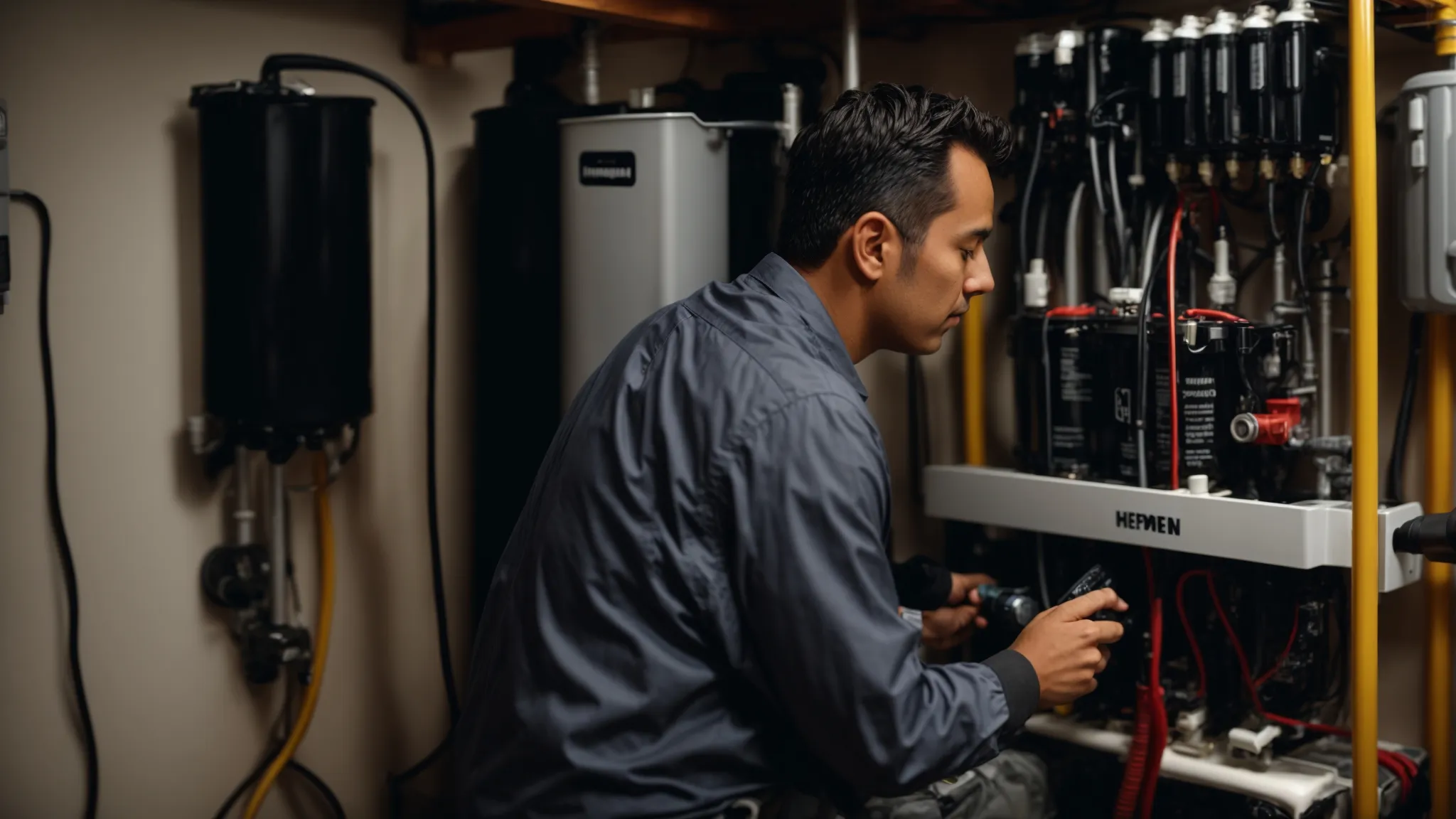
Embarking on the ritual of safeguarding one’s domestic realm with a sump pump battery backup system, my journey ushers me into confrontation with the immutable truths of limitation and dependency.
It’s an odyssey that illuminates the demarcated bounds of power duration and brings me face to face with the Achilles’ heel of battery reliance.
Acknowledgement of these constraining factors is not an admission of defeat, but rather, an exercise in thorough preparedness—an act of ensuring that my fortress against flooding is not compromised by unforeseen vulnerabilities.
Recognizing the Limitations in Power Duration
Even with a battery’s steadfast commitment, I must confront the truth: its energy is finite, a limited wellspring that cannot match the never-ending flow of time. As vigilance demands, I scrutinize the capacity, knowing full well that it’s a finite shield against the onslaught of the elements.
| Duration of Power Outage | Performance with Limited Battery | Consequence of Exhausted Battery |
|---|---|---|
| Short-term | Maintains operations, keeps waters at bay | Minor inconvenience, manageable impact |
| Extended | Struggles to cope as power wanes | Opens the floodgates to potential damage |
In acknowledgement of this limitation, I etch into mind the importance of aligning battery capacity with historical outages: a personal balance sheet where estimates of power failures and system capabilities converge, charting a course for comprehensive flood protection planned, not hoped for.
Addressing Common Issues With Battery Dependency
My journey through the realm of battery dependency sheds light on a truth as undeniable as gravity—the lifeline that a battery backup offers is tethered firmly to its chemical core. To combat the chronic concerns tied to battery life, I embrace proactive strategies, selecting batteries renowned for their longevity and predisposed to deliver unwavering power, anchoring my home’s defenses against the caprice of blackouts.
Confronted with the inevitable decline of battery efficiency over time, I engage with vigilance in the practice of periodic evaluations, a ritual aimed at ensuring my bulwark remains steadfast. Replacing batteries before they betray my trust becomes a sacred order, safeguarding the serenity of my home from the fangs of flooding despair.
Bridging the gap between caution and curiosity, we pivot to a spark of innovation that keeps the darkness at bay. Enter the vigorous variety of batteries, the unsung heroes ensuring our sump pumps never skip a beat.
Types of Batteries Used for Sump Pump Backups

Embarking on the quest to shield my domicile from the capricious whims of power outages, I venture into the heart of my sump pump’s ally—the variety of battery backups.
As a luminary in the realm of flood defense, my choice illuminates the landscape of possibilities, each with its own merits and idiosyncrasies, from deep-cycle stamina to the swift response of AGM technology.
These sentinels, charged with the sacred duty of keeping my basement sanctuary arid in the face of Poseidon’s wrath, demand keen scrutiny.
In the ensuing discourse, we journey through the different species of power cells, discerning which might best serve as the steadfast guardian of my hearth and home.
As I contemplate the guardians of the underground, selecting the ideal battery backup is akin to choosing a champion for an impending siege. Absorbed glass mat (AGM) batteries beckon with their maintenance-free allure and formidable resilience, poised to respond without hesitation when the power grid falters and darkness encroaches.
Lead-acid batteries, the workhorses of backup power, present an alternative with a lineage of proven reliability; their familiarity in the realm of backup systems conjures confidence. Their robust nature assures me that they will rise to meet the challenge, their laurels not unearned, peering through the storm with stoic resolve, awaiting the call to action.
Conclusion
In summary, the installation of a battery backup for sump pumps offers critical protection against power outages, enabling continuous operation and mitigating flood risk—thus ensuring peace of mind.
The key advantages include seamless transition to battery power during outages, ongoing water evacuation, and the prevention of post-outage damage, as detailed in our vigilant comparisons.
However, these systems come with considerations such as initial investment costs, ongoing maintenance, and the inherent limitations of battery capacity and lifespan.
Balancing the costs against the potential for long-term savings by avoiding flood damage offers a compelling financial argument for the installation of a battery backup system.
Still, one must be aware of the limitations in power duration and develop strategies to address common issues with battery dependency, such as proactive replacement.
Choices among battery types, like AGM and lead-acid, further influence the reliability and performance of one’s flood defense system.
Ultimately, selecting a battery backup for a sump pump is a strategic move against nature’s unpredictability, safeguarding one’s home from water damage while recognizing the system’s finite limitations.
